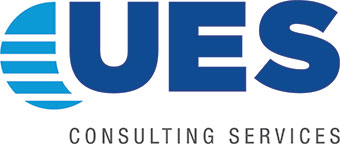Women who are Inspiring the Commercial Real Estate Industry
Our Chief Marketing Director, Jamie Taylor, is a proud member of Commercial Real Estate Women (CREW) which is an industry networking organization. And according to a recent study published by CREW, women are advancing in commercial real estate, especially in the C-suite, and the shrinking salary gap. However, there are still areas for improvement to get more women intrigued in CRE brokerage, less of an income gap, and leasing and sales positions.
Here are 3 helpful pieces of advice to improve your professional career from respected female leaders in the Commercial Real Estate Industry.
“This type of progress comes with lessons learned early on. The first few years of a career can be pivotal to future success. Whether it is mastering the art of negotiation, relationship building, or finding your voice, these years can make or break any career. Three women shared what they learned that helped them reach the success they have today and make their lessons work for them.“
-Maryann Reid, Forbes Articles
1. Agree to Disagree
Advice given by Angele Robinson-Gaylord, President: IKEA Property, Inc.
- As I began my career in commercial real estate, I had no idea how to build a career in this industry. I did not study real estate in college or law school, had no family or personal connections to the industry, and was a female in a field that is overwhelmingly male.
- You have to be conversant in the language of real estate to do deals and build credibility.
- You have to recognize that every relationship is valuable. Your path will cross those of your peers time and again.
- When conducting transactions, you must be tough enough to get the deal done, yet you must learn to disagree agreeably to not gain a reputation as a deal killer.
- You must persevere in the face of any obstacle or naysayer to reach your goals. In my case, it took 5 years to transition from practicing law to securing my first role on the business side of commercial real estate.
- Finally, I learned that you can’t do it alone.
2. Find Your Voice
Advice by Robin Kennedy, Executive Vice President, Acquisitions & Development: Montage International
- Early in my career, I was put on the spot in a senior level meeting. My opinion was different than many in the room, but I had a reasoned response. Granted, it was not the path that they chose, but that moment has had strong impact on me and served me well throughout my career.
- Voicing my opinion was not always appropriate, as many times I wanted to learn from those with more experience.
- But having this mindset has helped me to think about and become very practiced in how to make decisions.
- It has helped me to take proactive ownership and move strategically forward.
- At this point in my career, while the final decisions are often on my shoulders, I value those that can provide me with thoughtful opinions along the way.”
3. Trust Yourself
Lesley Horton Campbell, Associate General Counsel: Tiffany & Co.
- Never be afraid to step up and trust that you are smart enough to handle a stretch assignment.
- I made the mistake early on in my career of not stepping up for an assignment because I assumed that I was too junior and that naturally it would go to a more senior experienced colleague.
- The next time the same opportunity came around, I quickly stepped up without hesitation and ended up knocking it out of the park.
Need help with environmental consulting? UES Consulting and our broad team of inspectors are skilled in the demands of commercial and multi-family transactions. We know how in-depth and time-sensitive Phase I Environmental Site Assessments and Property Condition Assessments are and we can help the process go smoothly and finish on time.
If you are looking for a company to partner with on your commercial real estate transactions of any kind, we are here to alleviate the weight of environmental issues and minimize risks.
- Kansas City Development Landscape Still Booming!
- ULI Sets Forecast for a Potential 2021-2022 Rebound
- Long-Term Housing Shortages and Affordability Issues Keep Capital Flooding into Multifamily
- Medical Office Buildings a Safe Haven Asset During Uncertain Times; Physician Practices Still Struggle
- COVID-19 Response: UES Continues Business Operations as Normal


